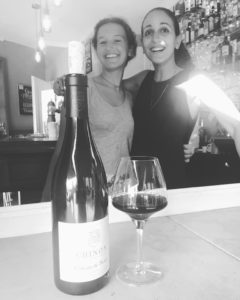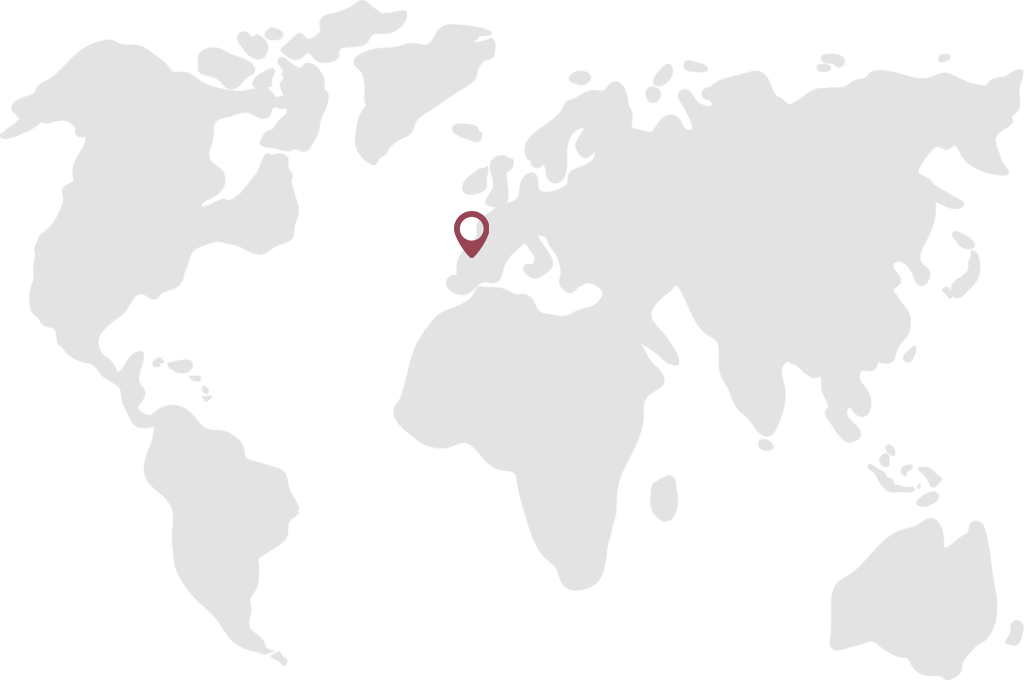
Some wines produced within the Czech Republic are daring and magnificent — tightrope walkers that beautifully balance finesse and control against staid comforts of plummy fruit and sandpaper tannins. Here is an invisible dance of gusto, prodded by the same bold mentality that sent Velvet Revolutionaries to chuck their ossified Soviet past. This landscape now shouts vibrant experimentation. Many other regions (including Bordeaux) could learn from sipping today’s best Czech juice.
Below are tales of two wine bars in Prague. One is local, low key and serves not unattractive bulk wine; the other focuses on quality for mainstream visitors.
Both are lively. One is even lovable.
One: The Sketchy Alley Wine Bar
There are two pathways to the Ma Skleničku Wine Bar within the city of Prague. Both are sketchy. One appears unlikely, because it passes through the inner bowels of a low key and dodgy looking arcade off Jindrišská street. The second option (which I took) leads to the end of an extremely sketchy alleyway. Deep inside this tunnel I was ready to pivot and hoof out for fear of getting mugged until I heard voices on the other side of a dumpster. They sounded joyous, not threatening. I tiptoed three steps forward, craned my neck and saw outdoor tables with wine glasses.

Score!
There were tables in the alleyway, as well as couches in the arcade. There were more seats inside. I entered. Quelle surprise. Adjacent to this run-down alley way, beautifully dressed ladies and dapper men sipped and bantered.
I sat.
Eight spigots sprouted out of one wall. A young guy with black hair pulled on any of these to pour wine.
I ordered white.
‘Ryzlink?’ He asked. ‘We have two types. One is smooth. The other tough.’
Tough.
I loved this place.
He suggested I start with smooth.

He poured a generous pour. The label above the spigot classified the juice as Moravian Table Wine, made from the Ryzlink Vlašsky (Welschriesling ) grape. No year was listed.
The décor was sparse. There was no music. No wine list. No charming server. No olives or bread. Water was tap water.
Jackpot.

Locals sat inside. Thursday evening youngsters chatters with animated politeness.
Wooden tables were small, likely hewn from a Czech equivalent of IKEA. The room lacked Aussie, Hanky, Brit or Chinese accents. A guy with purple hair tried picking up magnificent women by spouting ‘hakuna matatu’ in Swahili and insisting he buy them shots (they all declined). A drooling dog roamed across the floor.
Backstreet Prague. The real deal.
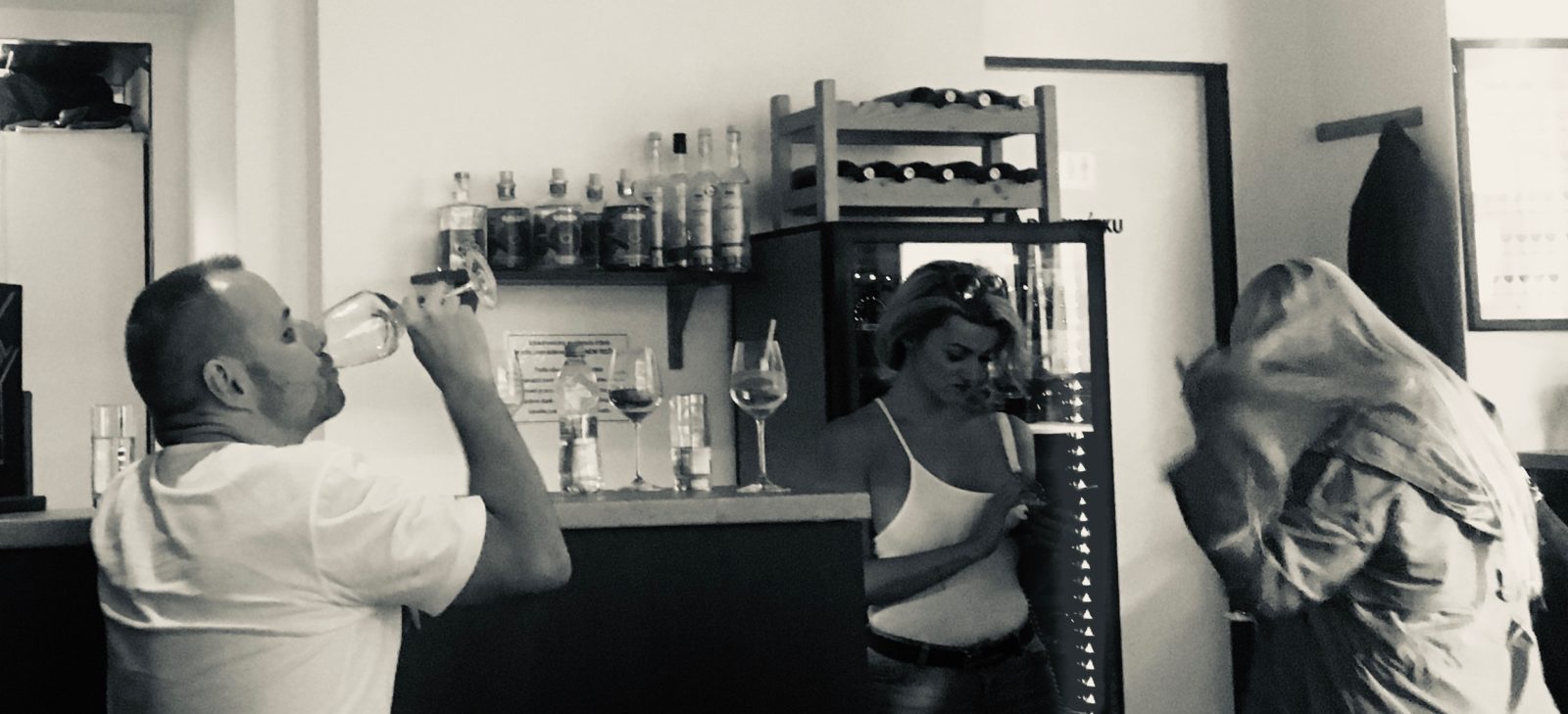
The largest white wall was pasted with brown letters that spelt grape varieties—from Chardonnay to Ryzlink Rynsky. A 30-something year-old well-coiffed man in a pinstripe suite and bow-tie chatted with casually attired coworkers. A blonde and brunette at the adjacent table wore stunning dresses that could have belonged to royalty.
A woman in high heels and ripped jeans with a tattooed shoulder breezed inside. Her blouse slung over one shoulder and flaunted curves, which incentivized Mr. Purple Hair to hover close and offer her a shot. She summarily declined. (Offering shots in a wine bar did not seem to be a particularly intelligent pickup strategy.) He next eyed me and smiled and I looked away, wary of getting near any whiff of his vodka.
I next ordered ‘tough’ ryzlink. The bartender told how customers included people who lived on the block. Apparently, and thankfully.

I ordered a final glass: rosé. This ruby dark juice from southeastern Moravia was truly tough. I whiffed diesel, asparagus and vinegar aromas, then tasted oatcakes.
The inner bar included glimmers of style. Chess pieces filled empty drawers on a shelf. There were enough skirts, machismo, jewels, embroidered blouses and preppy shirts to fill a king’s party chamber during some moonlit Moravian feast. Pickup lines flew, but most well-dressed locals greeted their comrades with discourse and genuine enthusiasm.
There were no free snacks. A blackboard listed available dishes—from Kachní Paštika (duck paté) for about $2.80, to Klobásy (grilled sausages) for $5.
I stood and paid. Three sizable glasses cost less than six bucks. The experience was precious, but it was getting dark and time to eat. I exited and turned left, this time staying well clear of that alleyway.
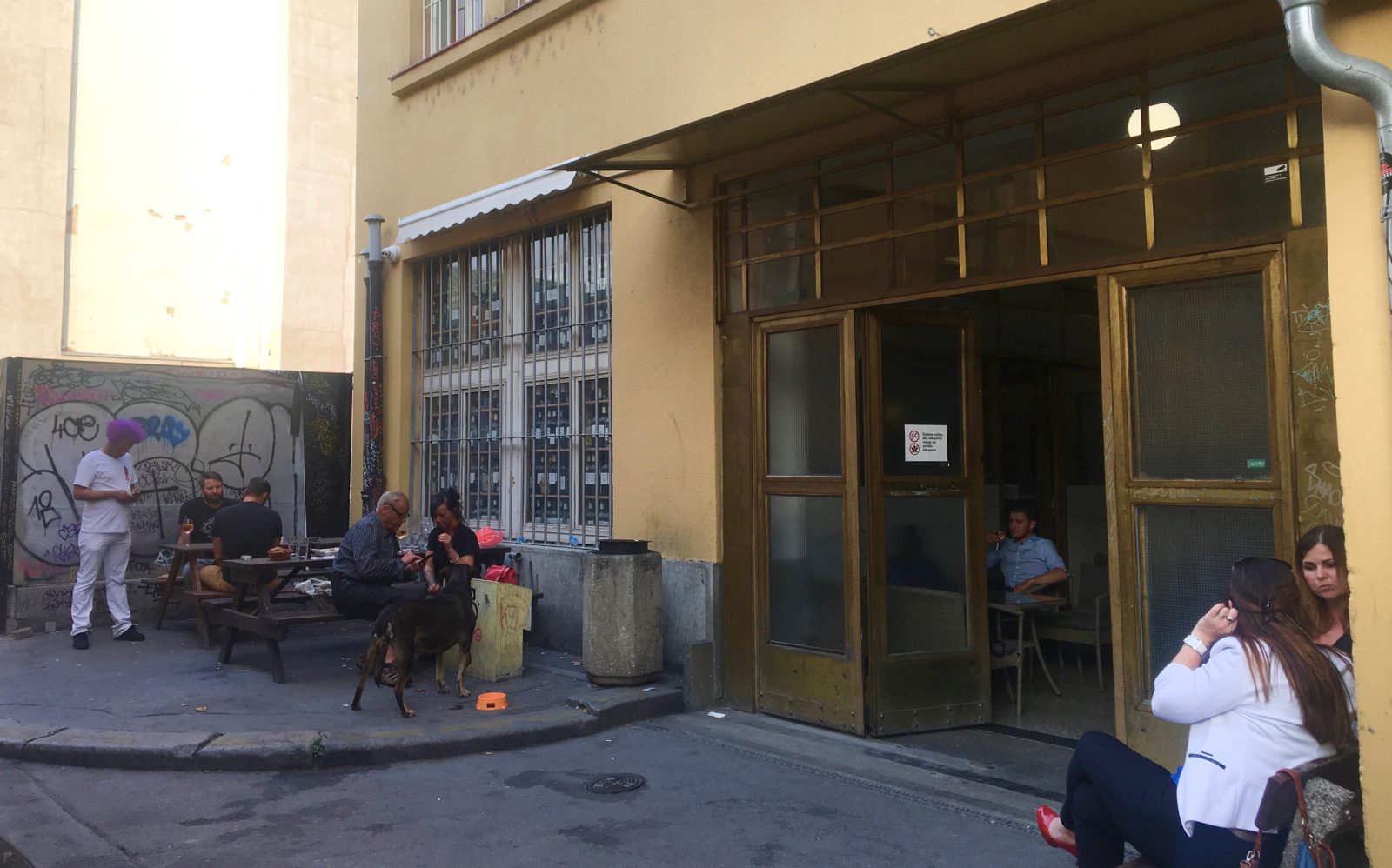
Two: Quality Although Slightly Commercial.
I stopped into Vinograf Wine Bar Senovazne (there are two associated Vinografs in Prague), which is neither pretentious nor overtly commercial. The long bar made from hand hewn wood is attractive; locals hang out to read newspapers. Long necked Riesling magnums stood on adjacent low tables where customers sat in comfortable chairs chatting while work partners uncorked after-toil beverages.

An electronic tablet menu in multiple languages here breaks down wines by the glass, of which on the day I visited there were 10 whites, two rosés, nine reds, two sparkling wines and 18 choices from bottles sealed by Coravin. The young servers love wine, and are jazzed to share information and advice.

I began with a 2017 white made from the Ryzlink Vlašsky (Welschriesling) grape from the ‘flowerline’ series, made by Mikrosvín Mikulov winery. Produced in the southeast Moravia wine region, this wine (no, it’s not Riesling) with a floral nose includes gritty, salty minerality in the mouth—a premium balanced beauty with cheekfuls of luscious acidity and crunchy minerals. The high latitude cool climate crispness includes warmth from summer sun kissed soils.

The second wine was a 2018 Grüner Veltliner (known in Czech as Veltlínski zelené) from Ilias winery. Grüner Veltliner is one of the more widely planted white grapes in the country. This white from the Mikulovská sub-region of Moravia is more Kansas or Missouri than California—a full flush of juice to enjoy a barbecue with—sweet and easy. It is as open as a Pinot Blanc but includes a sliver of spice in the mouth.
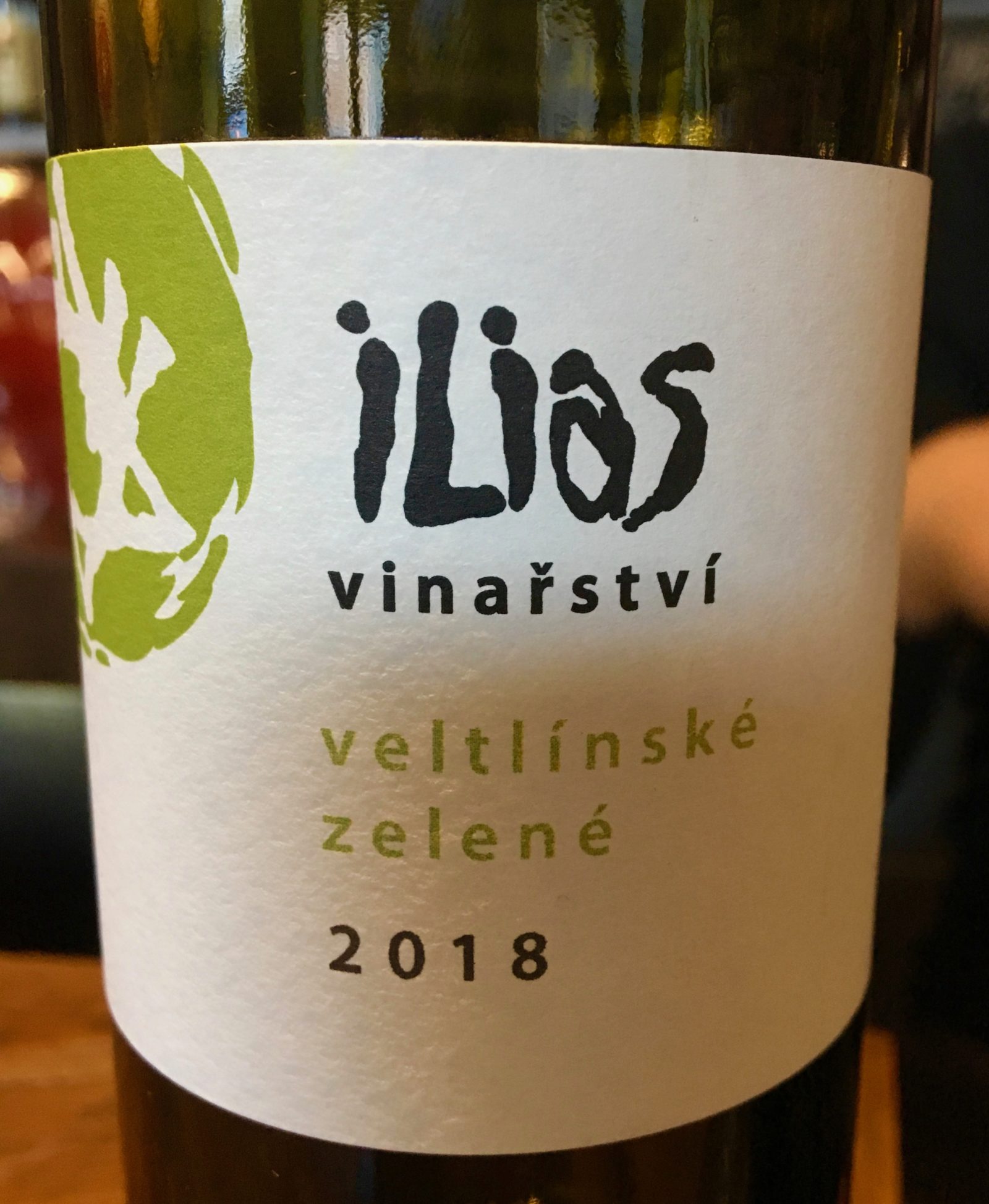
There are several small wine bars in Prague. What they lack in variety of juice they make up for in abundance of local character. When in doubt, ask locals where to go. Some of the best Czech wines are scintillating: balanced, bold and beautifully crafted.

My latest Forbes pieces include Biondi Sant from Tuscany, Château Ausone from Bordeaux and far more about Czech wines.
And, yes, the new website is still being prepared!
Thanks for tuning in again.

